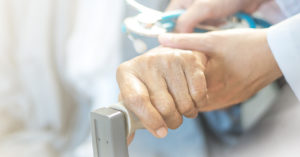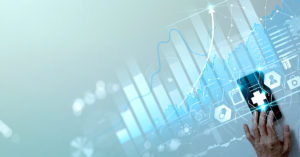For a healthcare data scientist, having lots of data is great. But according to Dr. David Mould in his recent IBM Magazine article, strong predictor variables are even more valuable than having a vast data warehouse. Dr. Mould explores the specifics on how new data sources such as fitness monitors trackers and social media can transform healthcare today.
Current healthcare data warehouses contain lots of data—perhaps even millions of rows of tabular data—and hospital data may be linked to pharmacy and physician data as well. Most of that data is from internal sources, and is relatively easy to collect. From a data scientist’s perspective, having lots of data is great; however, strong predictor variables are even more valuable than having more data. External data sources contain many strong predictor variables, but currently they are challenging to collect. Fortunately, progress is being made to make these rich data sources available to data warehouses.
There are two categories of newly available, potential data sources: real-time data and external data. Access and use of both these data types have the capability to significantly contribute to improved patient outcomes, which in turn helps reduce costs and improve the quality of healthcare for society.
Data feeds to monitors and tracking devices
Real-time data sources include digital activity trackers that have been used by physical fitness buffs for close to 15 years. Some brand names include Fitbit, Jawbone Up, and BodyMedia. These wearable devices track activity and other biometrics by monitoring location with Global Positioning System (GPS), heart rate, skin temperature, perspiration, calorie expenditure, and quality of sleep. Many of these trackers are generally worn on people’s wrists and are Bluetooth-enabled, which allows the data to be downloaded to a smartphone or computer in real time.
Activity tracking can also be used to assist elderly patients who want to live independently, allowing their adult children or caregivers to monitor the patient’s health from afar. For example, a statistically significant deviation in heart rate, temperature, or activity level will alert an adult daughter to a potential problem, prompting her to check in with her elderly mother. Thus, activity trackers can encourage taking proactive steps before a medical crisis takes place, and in this example help an elderly mother avoid an emergency hospital procedure and the accompanying cost.
Large technology companies such as Apple are also getting into the game. The yet-to-be-released Apple iWatch is rumored to feature monitoring of harmful ultraviolet (UV) rays, heart rates, and blood-oxygen levels; using optoelectronics to measure oxygen saturation of hemoglobin; and monitoring the sound of blood flow through arteries.
Programmable pacemakers have been around for years, and even more advanced and smaller surgically embedded devices are currently being developed. These new devices are expected to be embedded into blood vessels, lungs, the brain, and possibly other organs to track and monitor patients’ vital measures such as temperature, oxygen levels, blood flow, and blood pressure in real time. The data will be collected with Bluetooth-like transmissions to be analyzed on smartphones, and a text message can be sent or a phone call can be made to a primary care physician when something is amiss.
Physicians are now entering their notes on tablets or laptops, making this electronic data available in real time.
To read more about external data sources, visit Dr. Mould’s full article published in IBM Magazine, “Rich Data Sources for Abundant Innovation.”
Get our take on industry trends
Best practice tools to build an integrated approach to multimorbidity
The traditional model of treating single diseases no longer works. Data collected from 2016 to 2019 indicated that 32.9% of…
Read on...Will adopting a risk-based approach with augmented analytics support care gap closure?
A common challenge for healthcare systems is how to properly segment its patient populations based on risk profiles and co-morbidities. Doing this well ensures a high quality of care delivery and superior patient outcomes.
Read on...4 questions healthcare executives are asking about augmented analytics
At our annual Impact Summit, I had the privilege to talk about augmented analytics and address questions from healthcare executives—many…
Read on...


